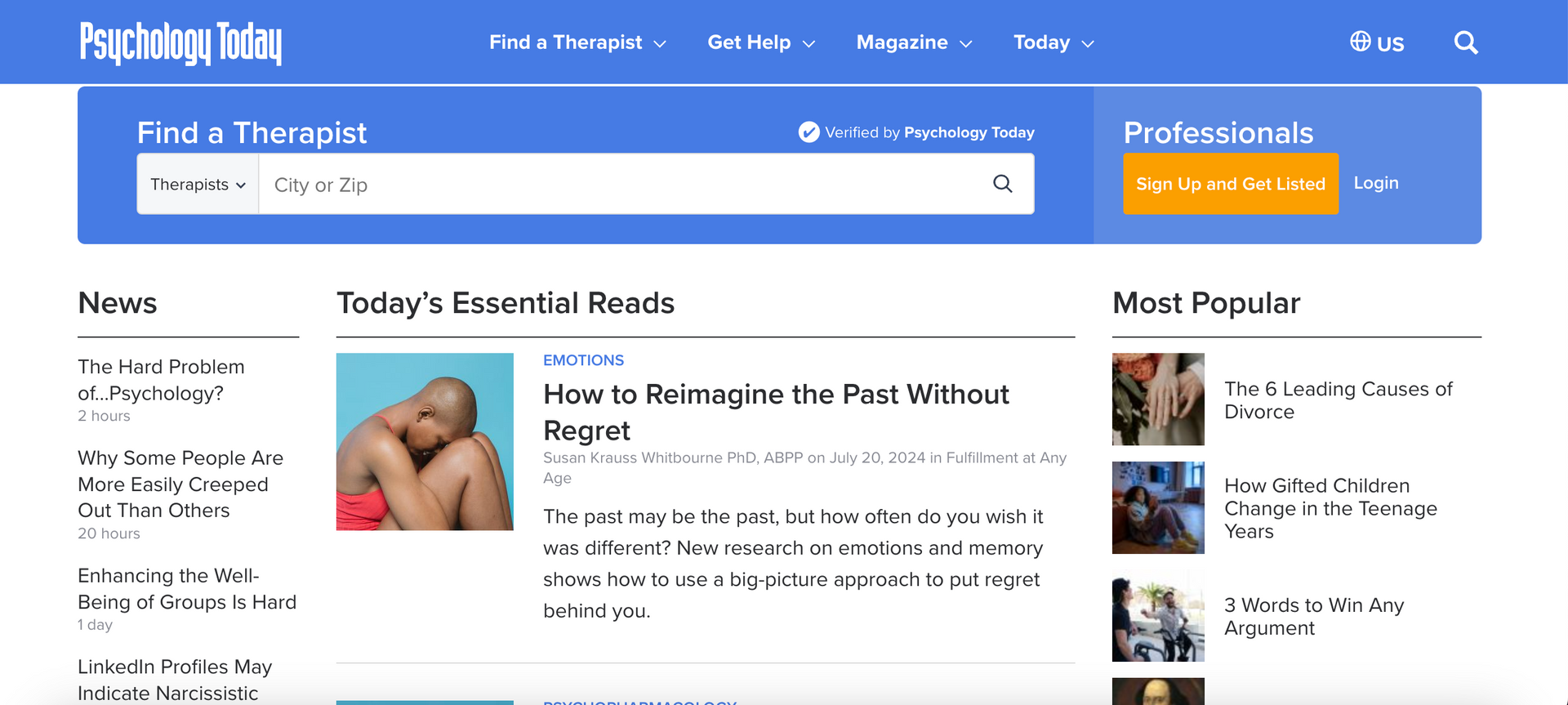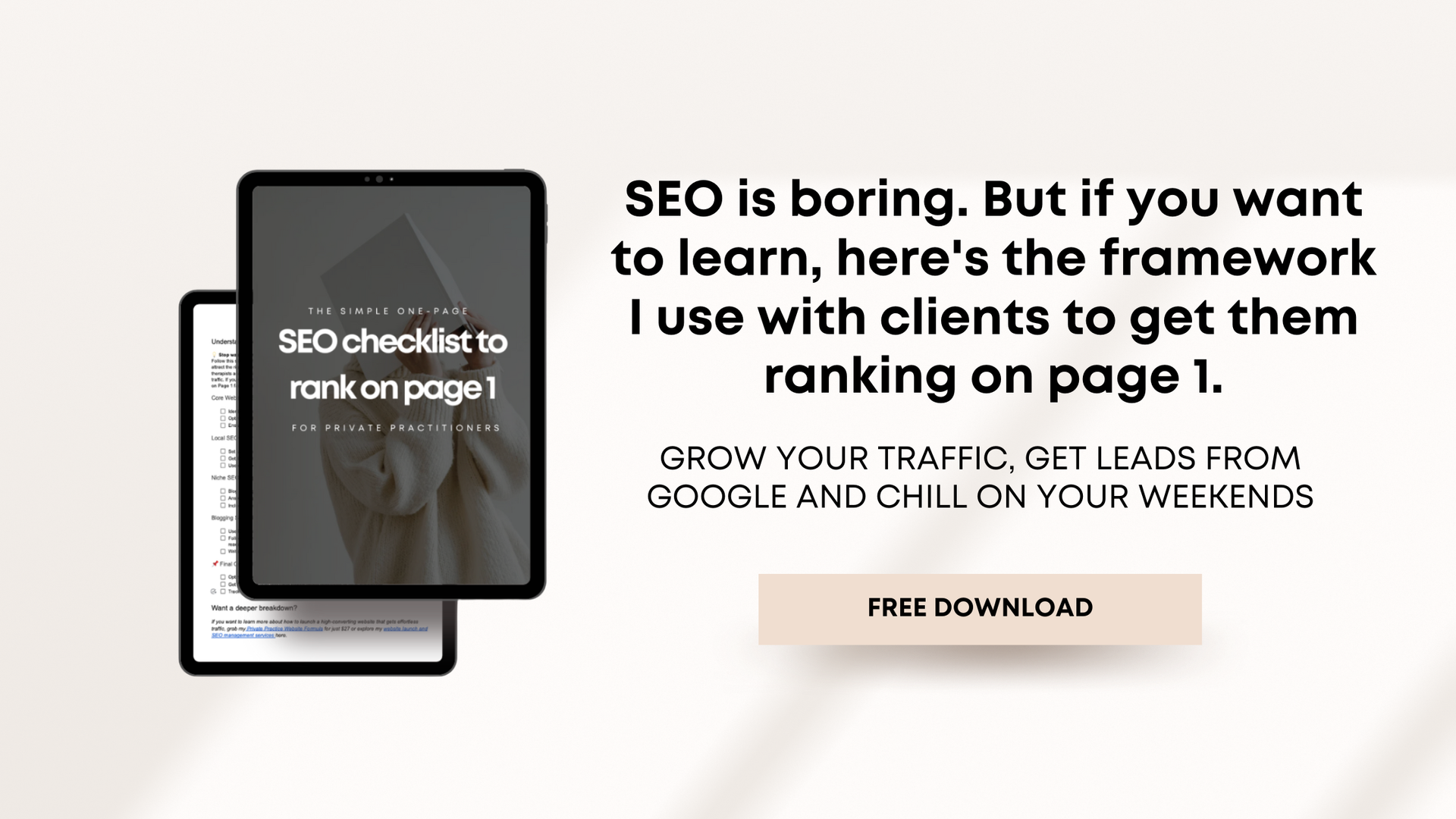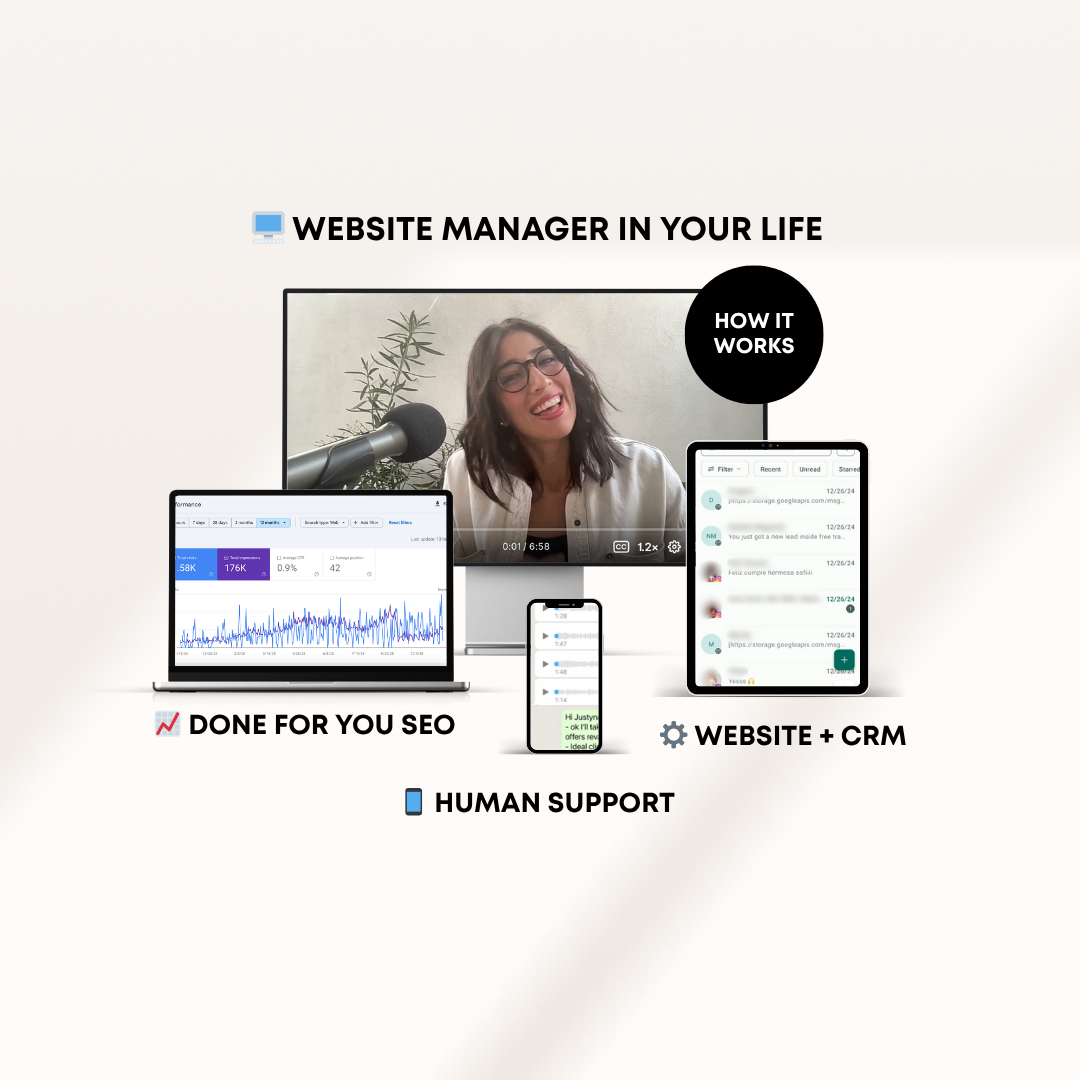How to write an engaging Psychology Today profile
Are you a mental health professional looking to start your private practice or attract more clients? If so, creating an engaging Psychology Today profile is a crucial step. In a world where online presence can make or break your practice, leveraging Psychology Today to optimize your profile can help you stand out and connect with potential clients.
If we haven't met before, allow me to introduce myself. I'm Natalia Maganda, a
website designer for mental health professionals
, dedicated to helping ambitious individuals like you amplify their magic, gain visibility, and simplify their marketing efforts through strategic web design and content.
Today, we're diving into an important topic that can have a significant impact on your private practice: how to write a compelling Psychology Today profile. As you start your journey of building your own practice, attracting therapy clients becomes a top priority. And Psychology Today is the perfect platform to showcase your expertise and connect with potential clients who are seeking the support you offer.
Creating a strong online presence is essential for any mental health professional looking to expand their reach and attract new clients. One of the most effective ways to achieve this is by optimizing your profile on Psychology Today. This platform is a trusted resource for individuals seeking mental health support, offering a comprehensive directory of therapists, counselors, and life coaches.
By taking the time to create a compelling and informative profile, you can significantly enhance your visibility and credibility. In the following sections, we'll dive into the specifics of what makes a Psychology Today profile effective and provide actionable tips to help you optimize your presence on the platform.
What is Psychology Today?
Psychology Today
is not just another directory; it's a widely recognized platform where therapists, counselors, and other mental health professionals can create profiles to connect with potential clients. It serves as a trusted resource for individuals seeking mental health support, providing a comprehensive directory of professionals in various specialties. By having a profile on Psychology Today, you increase your visibility and credibility in the mental health community.

Why do therapists need a Psychology Today profile?
Having a strong online presence is crucial in today's digital age. A well-crafted Psychology Today profile acts as your virtual business card, creating credibility and trust among potential clients. Here are some key reasons why therapists need a Psychology Today profile:
You can reach more people without an active social media account or website for your private practice:
By having an active presence on Psychology Today, you increase your chances of being discovered by individuals searching for therapy services in their area.
Targeted audience:
Psychology Today attracts a specific audience actively seeking mental health support, ensuring that your profile reaches the right people who are more likely to become your dream clients.
Professional validation:
Being listed on Psychology Today adds an extra layer of professionalism and credibility to your practice. It shows potential clients that you are committed to your field and have met the rigorous standards set by the platform.
What should I write in my Psychology Today profile?
Your Psychology Today profile is an opportunity to showcase your unique qualities and attract your ideal clients. Here are some essential elements to include:
Professional headline
Your headline is the first thing potential clients see. Make it concise and impactful. For example, "Compassionate Therapist Specializing in Anxiety and Trauma" immediately communicates your focus and approach.
Professional photo
A high-quality, professional photo builds trust and makes your profile more personable. Ensure your photo is welcoming and reflects your professional demeanor.
Detailed biography
Your biography should provide an overview of your professional journey, including your education, training, and experience. Highlight what makes you unique as a therapist. Share your therapeutic philosophy and the types of therapy you offer. Use a conversational tone to make it engaging and relatable.
Inside your bio use the psychology of a hook with your area of expertise, call out your ideal client and write some sentences about how they are feeling right now, then show them how you can provide a solution, and finish off with a call to action.
Here is an example of how to write your Psychology Today bio:
As a licensed therapist with over a decade of experience, I specialize in helping individuals who struggle with anxiety and trauma. If you find yourself feeling overwhelmed by daily stressors, constantly on edge, or haunted by past experiences, you are not alone. Many of my clients come to me feeling stuck and unsure of how to move forward.
Through a compassionate and evidence-based approach, I help clients navigate their emotions and develop coping strategies that lead to lasting change. Whether through cognitive-behavioral therapy (CBT) or mindfulness techniques, my goal is to empower you to reclaim control over your life and find a sense of peace and balance.
If you’re ready to take the first step towards healing and growth, I invite you to reach out for a consultation
Use this prompt to write your new Psychology Today bio:
As a [licensed therapist with over x number of years of experience], I specialize in helping individuals who struggle with [specific issues, e.g., anxiety and trauma]. If you find yourself feeling [specific feelings, e.g., overwhelmed by daily stressors], constantly [specific symptoms, e.g., on edge], or haunted by [specific experiences, e.g., past traumas], you are not alone. Many of my clients come to me feeling [common feelings of clients, e.g., stuck and unsure of how to move forward].
Through [ what makes you different statement, e.g., a compassionate and evidence-based approach], I help clients [ your signature therapy style e.g., navigate their emotions and develop coping strategies] that lead to [emotional desired outcome]. Whether through [therapy methods, e.g., cognitive-behavioral therapy (CBT)] or [techniques, e.g., mindfulness techniques], my goal is to empower you to [ desired outcome e.g., reclaim control over your life and find a sense of peace and balance.]
If you’re ready to take the first step towards healing and growth, I invite you to reach out for a consultation.
Areas of expertise
List your specialties, such as anxiety, depression, trauma, or relationship issues. Be specific about the populations you serve, whether it's adults, teens, couples, or families.
Therapy approach
Describe your therapy approach and techniques. Do you use cognitive-behavioral therapy (CBT), mindfulness-based therapy, or another modality? Explain how these methods benefit clients and why you are passionate about them.
Endorsements
If possible, include endorsements. Positive feedback from others can significantly boost your credibility and attract new clients.
Contact information
Make sure your contact information is up-to-date and easily accessible. Include multiple ways for potential clients to reach you, such as phone, email, or a contact form on your website.
How to maximize your Psychology Today profile?
Now that we understand the importance of a well-crafted Psychology Today profile let's explore some strategies to maximize its effectiveness:
1. Use high-quality photos:
Invest in professional headshots that capture your personality and warmth. A picture speaks a thousand words, and a friendly, approachable photo can create an instant connection with potential clients.
2. Optimize your profile:
Use relevant keywords throughout your profile to improve search engine optimization (SEO). This increases the likelihood of your profile appearing in search results when individuals are looking for therapy or coaching services. Make sure you include the states or areas where you can provide therapy and counseling.
3. Engage with the community:
Participate in Psychology Today's community forums, answer questions, and contribute valuable insights. This not only establishes you as an authority but also increases your visibility within the platform.
Crafting a compelling Psychology Today profile is a powerful way to attract dream clients and build a successful private practice.
By leveraging this platform effectively, you can increase your visibility, establish credibility, and ultimately connect with those who are seeking the support you provide.
And if you'd like further advice to get clients online here are 2 ways I can help right now:
1- Join my Marketing Growth Hub
Inside my Marketing Growth Hub includes an all-in-one Notion Resource Hub with:
- Marketing Growth Planner
- Business Goals Organizer
- Strategic Quarterly Tasks
- Content Plan Tracker
- Business Journal
- Client Resources & Brain Dump Hub
- Extra resources, links and prompts inside each hub to support you with actionable tasks to tackle in 1 hour per week
2- Check out my custom website services and traffic growth plans for therapists
- Get a customized website tailored to your private practice. (Website in a week, month or custom buildouts with online course setup take up to 8 weeks)
- SEO optimization to ensure clients find you easily.
- Website copy coaching or done-for you website copy
- CRM, email marketing setup or course platform integration
- Get VIP hosting, on-going website maintenance and yearly traffic growth plans
Explore my web design services for therapists here.
Related reads:
- The ultimate guide to branding your therapy and private practice
- 10 simple ways to get more therapy clients for your private practice
- 20 modern therapist logo ideas
- 80 mental health and therapy quotes
- SimplePractice vs TherapyNotes in-depth comparison
- Therapist networking tips and where to find online events

* AI Disclosure: This content may contain sections generated with AI with the purpose of providing you with condensed helpful and relevant content, however all personal opinions are 100% human made as well as the blog post structure, outline and key takeaways.
* Affiliate Disclosure: Some of the links on www.nataliamaganda.com may contain affiliate links meaning that I will get a commission for recommending products at no extra cost to you.

hello! i'm natalia
Latina, web design expert for mental health professionals.
I help ambitious life coaches, therapists and holistic leaders amplify their magic, gain visibility, and simplify their marketing efforts through strategic web design and content.
If you’re looking for an all-in-one system to manage your website, emails, funnels, and CRM, Go HighLevel (affiliate link) is the most powerful tool I’ve tested—and it’s built to grow with you.
On a tighter budget or just starting out? ThriveCart (affiliate link) offers a one-time payment option and easy checkout setups that still pack a punch for digital offers and automation. (Send me an email after your purchase and make sure to use my affiliate link)






